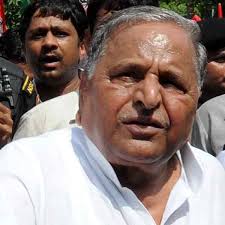
Congress and RLD have alleged that a Gujarat is being sought to be played out in UP while attacking both SP and BJP over the communal flare-up.
"There was no justice in Gujarat but justice will be done in UP...I have never done the politics of caste and religion. Strict action will be taken against the guilty. We will provide the maximum possible assistance to them (the riot victims)," Yadav told reporters at the conclusion of his party's National Executive meeting here.
He was responding to a question on the remarks of RLD chief Ajit Singh that SP was doing what Modi had done in Gujarat to polarise votes.
Singh had earlier said,"If you go back to what Modi has done in Gujarat was basically that he did not act. He stopped police from taking any action and that is what happened in UP."
Rejecting the charge, Yadav said that his party's government will take "such strong action (against the culprits) that they will never dare to repeat it".
He said that the state government has taken into custody many people and and will arrest all those who are on the run.
To a question on allegations that some officers were negligent in taking timely action to prevent the riots, he said, "If there has been negligence, then action will be taken."
The SP chief refused to get into the allegations that politics was behind the riots, saying, "We will not engage in politics regarding it. Deaths have happened. We will not do politics on it."





Comments
Add new comment